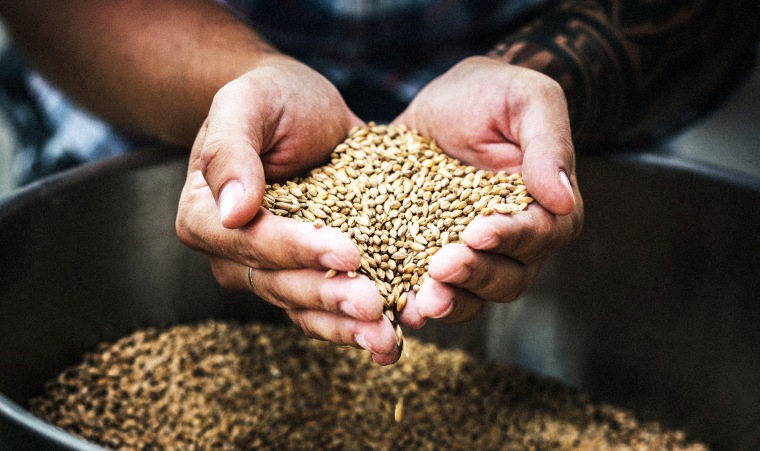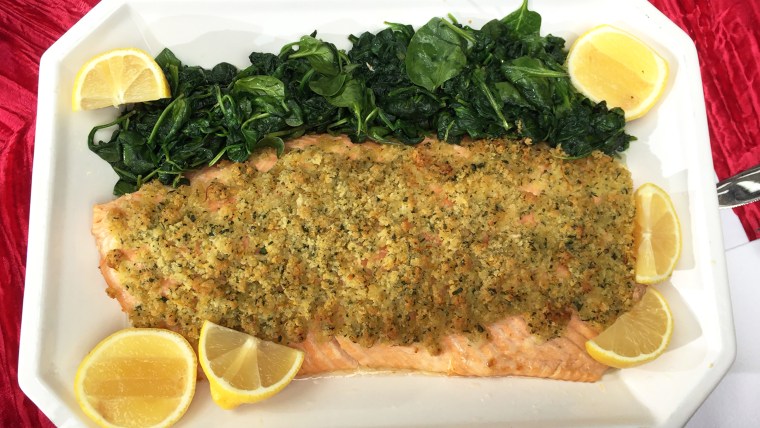The Nordic diet has nourished humans for centuries. It’s been generating buzz lately because a recent study found that it may help lower blood sugar and cholesterol, but it's also a great way to keep your diet in check during the colder months. It's pretty chilly in Nordic countries, after all, so why not take winter eating tips from places that do it much of the year?
Still, controlling your weight can be hard during the holidays and the Nordic diet might make it easier. The participants in the study were kept at a stable weight on purpose, meaning they were instructed to eat more if they lost weight, but you don't have to if weight loss is a priority for you.
Researchers attributed the positive changes in the blood sugar and cholesterol of the participants to the “unique composition of fats” in the Nordic diet. It's higher in both omega-3 and omega-6 unsaturated fats than the standard American diet. This combination of fats seems to be particularly beneficial for health, reported Clinical Nutrition.
“The group that had been on the Nordic diet for six months became significantly healthier, with lower cholesterol levels, lower overall levels of both saturated and unsaturated fat in the blood, and better regulation of glucose, compared to the control group,” said Lars Ove Dragsted, study co-author and a researcher at the University of Copenhagen’s Department of Nutrition, Exercise and Sports, in a statement.
“Most people believe that positive effects on blood sugar and cholesterol are solely due to weight loss. Here, we have found this not to be the case. Other mechanisms are also at play.”
Most people can enjoy the plan and stick with it for the long-term, said Alexis Supan, a dietitian at the Cleveland Clinic Center for Integrative and Lifestyle Medicine in Lyndhurst, Ohio.
“There are tons of foods in there — lots of options. I encourage anyone to look at the Nordic diet,” Supan told TODAY. “There are multiple, multiple health benefits for most people.”

What is the Nordic diet?
As the name implies, it comes from the Nordic region — which encompasses Sweden, Norway, Iceland, Denmark and Finland — and is based on the local foods available in that area, Supan said.
The diet emphasizes seafood, whole grains, fruits and vegetables — especially those that are in season and locally-sourced, so you will mostly eat:
Fatty fish, such as salmon, sardines and mackerel. They provide omega-3 fatty acids and are an important dietary source of vitamin D.
Fruits, with a big emphasis on berries, such as blackberries, raspberries, blueberries and strawberries, which are antioxidant powerhouses.
Vegetables, making sure to include plenty of root vegetables that are common in the region, such as carrots, turnips and beets. Cabbage and other cruciferous vegetables, which also grow well in the Nordic countries, have been studied for their cancer-preventing effects and contain more antioxidants than most other vegetables.
Whole grains, such as rye, barley and oats.
Low-fat dairy, which can include skyr yogurt and kefir.
Beans and legumes, which are an important plant-based component of most healthy diets.

Nordic diet food planning
The Nordic diet and the Mediterranean diet are very similar in that they both emphasize whole grains, fruits and vegetables. Both are considered to be mostly plant-based diets.
There are some key differences however:
The oil: The Nordic diet emphasizes the use of canola oil — “a big change from the Mediterranean diet,” which famously features olive oil, especially extra virgin olive oil, at its core, Supan noted.
Canola oil is low in saturated fat, while containing a higher level of alpha-linolenic acid — a type of omega-3 fatty acid found in plants — than olive oil, which is connected to heart-protective benefits, research has found.
But canola oil is a bit controversial and needs to be studied more, she added. “Some say it’s perfectly healthy; other research says it might cause inflammation or have other negative impacts on your health,” Supan said.
“Part of the reason that we aren’t as into canola oil and we don’t promote it quite as much as extra virgin olive oil is that canola oil, and especially the kind we get in America, is very highly refined, which means we lose a lot of minerals, we lose a lot of antioxidants in that process.”
Extra virgin olive oil, on the other hand, has been confirmed as very heart healthy and an overall healthy oil by research, she said.
Game meat: Red meat is kept to a minimum in the Mediterranean diet, but the Nordic diet recommends game meat in moderation. Meat from wild animals is leaner than that of domesticated ones and has a better fatty acid composition, studies have found. Venison and bison would probably be the two most popular game meat options in the U.S., Supan noted.
Alcohol: While the Mediterranean diet focuses on red wine, there’s so such specific recommendation for the Nordic diet. The main guidance is to drink alcohol in moderation, Supan said.
What are the foods to avoid?
Mainly those high in sugar or saturated fat, and highly processed foods.
“Do your best to keep (sugar) out of your diet as much as you can and keep sweets to the rare treats that they are,” Supan said. “When you are craving sugar, you’re always best off eating something with natural sugar in it, so trying to have a piece of fruit to satisfy your sweet tooth.”

Benefits of the Nordic diet
Research has shown it reduces inflammation and the risk of Type 2 diabetes; lowers cholesterol and blood pressure, and promotes a healthy weight, Supan noted. “If weight is a concern for you, it can be a beneficial way to lose weight,” she added.
That may be the effect of eating more filling fiber and less sugar. After six weeks of following the Nordic diet, people lost more weight than when eating a standard diet, even when both groups ate as much as they wanted to, one study found. In another, people with obesity who followed the Nordic diet for six months lost about 10 pounds, or about three times more than people who ate an average diet.
The newest study was designed to avoid weight loss in order to focus on other health benefits. As part of it, 200 overweight participants with metabolic syndrome were randomly assigned to eat either a healthy Nordic diet or their usual diet. After six months, people who ate the Nordic diet had lower levels of cholesterol, triglycerides and inflammation; and better regulation of blood sugar, researchers found.
Bottom line: Supan would recommend the Nordic diet as a healthy eating pattern.
“If the food looked tasty to you, I would definitely encourage you to try and follow it,” she said.
How to start the Nordic diet
Starting any kind of diet can seem daunting, but it can also be a great way to clean out your cupboards. What better time to do a pantry purge than before the holidays, when many local food banks will be looking for donations?
Start by clearing out processed foods, anything high in sugar, and booze. Then start stocking up on the Nordic diet staples: Canola oil (or go with extra-virgin olive oil if you prefer it), low-fat dairy, fatty fish (like salmon), whole grains (like barley), legumes, fresh veggies and berries. If you want to include meat, ask your butcher to point out lean game varieties.

Nordic diet recipes
Simplicity is key to the Nordic diet, so you don't have to worry about a bunch of complicated recipes. But if you're looking to dress up your diet, here are a few amazing Nordic diet recipes to try:
- Finnish Salmon Soup: This soup, also called Lohikeitto, is great for these crisp evenings.
- Spice-Roasted Carrots with Lentils: It’s a great time to get fresh root vegetables and this recipe makes them seem decadent, even though it’s actually vegan.
- Lemon-Crusted Salmon with Garlic Spinach: Swap out the breadcrumbs for ground nuts and you'll have a quick, Nordic-friendly meal.
